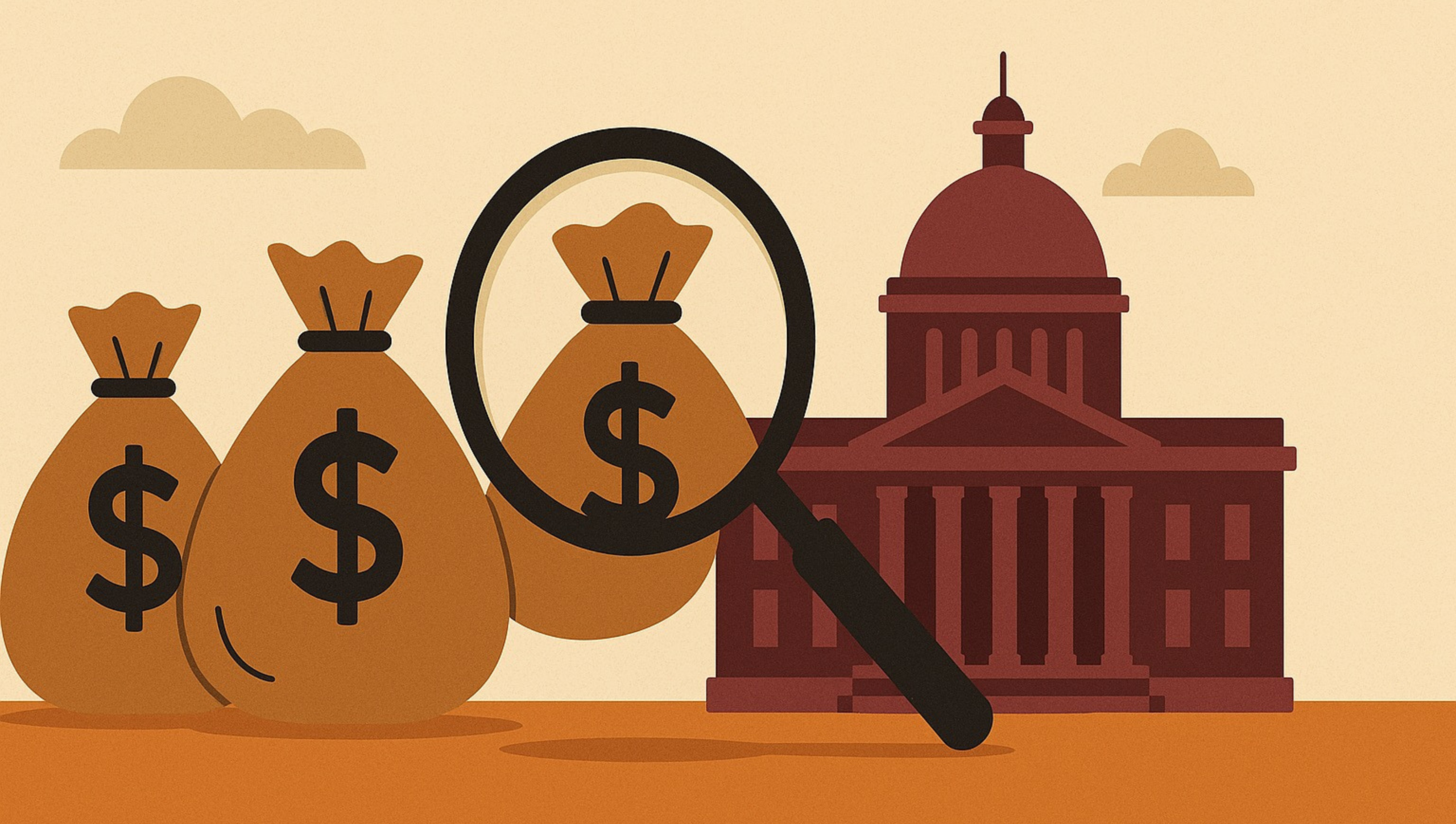Texans are upset that their property tax relief is less than the Texas Legislature promised last year. While Texans for Fiscal Responsibility wrote about how we should expect this outcome, the reporting and claims about this relief were that it was the “largest property tax reduction plan in the history of Texas and the United States” or even the “largest property tax relief package in Texas history, and likely the world.”
Those claims are wrong because the amount of relief was not as much as what was provided in 2006 for fiscal years 2008 and 2009, but the Texas Comptroller’s new property tax rates and levies for 2023 show the resulting relief was not the largest either.
Fortunately, there are ways to correct this next time by reducing spending and putting school property taxes on a path to elimination.
1) What was the 2023 property tax relief package?
Texas Governor Greg Abbott signed SB 2, the property tax relief bill, in August, and voters approved HJR 2 in November. In his press release, he said, “Today, I am signing a law that will ensure more than $18 billion in property tax cuts—the largest property tax cut in Texas history.”
However, $5.3 billion of this $18 billion was in Section 18.79 of the General Appropriations Act (HB 1), passed in the regular session to maintain past property tax relief efforts. This resulted in just $12.7 billion in new property tax relief provided by SB 2 and HJR 2, substantially less than the $32.7 billion surplus, or less than 40% of the surplus went to new property tax relief.
The 2023 property tax package for the $12.7 billion in new tax relief includes:
· Reducing school property tax rates (i.e., compression) by 10.7 cents per $100 valuation for school maintenance and operations (M&O) property taxes in 2023 and maintaining it in 2024 for $7.6 billion.
· Raising the homestead exemption for school property taxes by $40,000 to $100,000 and $110,000 for seniors and disabled for $4.9 billion.
· Limiting appraisal value increases at 20% to non-homesteaded real property valued at $5 million and under as a 3-year pilot program for $0.2 billion.
Given the $12.7 billion was for two years, there is about $6.35 billion available yearly for school property tax relief, though there is likely less in 2023 to have enough to maintain the relief in 2024.
2) Was this the largest amount of property tax relief in Texas history?
We have previously noted that the $12.7 billion in new property tax relief was less than the $14.2 billion passed in a special session in 2006 to reduce school property tax rates by one-third in the 2008-09 biennium. The latest amount is the second largest in Texas history but well below the amount in nominal value, as passed for 2008-09, and substantially below the $21 billion needed to have the same purchasing power today (adjusted for inflation).
3) Did the 2023 property tax relief provide the largest cut in property taxes in Texas history?
We consider the recently reported 2023 tax rates and levies by the Texas Comptroller’s office to compare the result of this second-largest amount for property tax relief in Texas history. While we mostly use the Comptroller’s property tax data, we corrected some inconsistencies for several cities and counties, as these are preliminary data and haven’t been fully checked yet. We also worked with the Comptroller’s office to make some corrections to school property taxes. These corrections do not substantially change our findings’ results but provide more precise estimates for total property taxes and by jurisdiction.
Table 1 shows the property taxes by major jurisdiction in 2022 and 2023, along with the changes in dollars and percentages.
Table 1. Property Taxes Increased by Nearly $165.2 million in 2023
| Tax Year | Special Districts | Counties | Cities | School Districts | Total Property Taxes |
|---|---|---|---|---|---|
| 2022 | $ 11,114,932,893 | $ 12,797,292,176 | $ 13,634,971,451 | $ 43,947,280,443 | $ 81,494,476,962 |
| 2023 | $ 12,642,316,100 | $ 14,272,154,384 | $ 14,934,755,802 | $ 39,810,455,014 | $81,659,681,299 |
| Change | $ 1,527,383,207 | $ 1,474,862,208 | $ 1,299,784,352 | $ (4,136,825,429) | $ 165,204,337 |
| % | 13.7% | 11.5% | 9.5% | -9.4% | 0.2% |
The results show that the $6.35 billion in school property tax relief resulted in 9.4% cut of $4.1 billion to $39.8 billion. This means the return on the $6.35 billion was just 65%. More specifically, there was a reduction in school M&O property taxes by $5.0 billion (78.7% return) or a 15% cut to $28.6 billion. But the $890.2 million increase (+8.6%) in school I&S property taxes to $11.2 billion as school districts issued more debt.
Total property taxes increased by 0.2% or $165.2 million to $81.7 billion. This was because special purpose districts, counties, and cities substantially increased property taxes. School districts also issued more debt paid with higher property taxes. Collectively, these local tax entities wanted to spend more and raised property taxes, negating much of the state’s effort to reduce property taxes for Texans.
For comparison, Table 2 provides data from the Texas Comptroller’s Biennial Property Tax Report for 2020 and 2021.
Table 2. Property Taxes by Jurisdiction since 1998
| Tax Year | Special Districts | County | City | School Districts | Total Property Taxes | Total Property Taxes Change |
|---|---|---|---|---|---|---|
| 1998 | $ 1,883,080,138 | $ 2,619,628,810 | $ 2,970,251,205 | $ 11,228,753,261 | $ 18,701,713,414 | |
| 1999 | $ 2,063,101,426 | $ 2,646,645,113 | $ 3,179,745,715 | $ 11,917,859,505 | $ 19,807,351,759 | 5.912% |
| 2000 | $ 2,888,621,638 | $ 2,873,452,097 | $ 3,504,092,996 | $ 13,301,083,561 | $ 22,567,250,292 | 13.934% |
| 2001 | $ 2,651,610,746 | $ 3,246,024,017 | $ 3,847,976,857 | $ 15,026,153,737 | $ 24,771,765,357 | 9.769% |
| 2002 | $ 2,867,735,633 | $ 3,507,842,313 | $ 4,117,776,708 | $ 16,262,058,353 | $ 26,755,413,007 | 8.008% |
| 2003 | $ 3,084,209,240 | $ 3,774,835,414 | $ 4,366,866,303 | $ 17,198,357,427 | $ 28,424,268,384 | 6.237% |
| 2004 | $ 4,579,488,574 | $ 4,089,744,284 | $ 4,518,242,703 | $ 18,428,882,515 | $ 31,616,358,076 | 11.230% |
| 2005 | $ 3,617,024,497 | $ 4,402,504,841 | $ 4,863,361,658 | $ 20,186,781,140 | $ 33,069,672,136 | 4.597% |
| 2006 | $ 3,970,005,374 | $ 4,937,545,611 | $ 5,286,535,198 | $ 20,811,154,860 | $ 35,005,241,043 | 5.853% |
| 2007 | $ 4,512,711,637 | $ 5,352,522,462 | $ 5,895,031,685 | $ 18,796,244,425 | $ 34,556,510,209 | -1.282% |
| 2008 | $ 4,952,792,863 | $ 5,863,884,238 | $ 6,406,453,878 | $ 21,124,726,350 | $ 38,347,857,329 | 10.971% |
| 2009 | $ 5,134,342,018 | $ 6,035,439,440 | $ 6,546,689,972 | $ 21,681,527,731 | $ 39,397,999,161 | 2.738% |
| 2010 | $ 5,395,436,477 | $ 6,036,573,208 | $ 6,553,776,429 | $ 21,582,858,323 | $ 39,568,644,437 | 0.433% |
| 2011 | $ 4,924,190,615 | $ 6,208,531,842 | $ 6,661,221,363 | $ 21,923,148,715 | $ 39,717,092,535 | 0.375% |
| 2012 | $ 5,530,689,644 | $ 6,505,085,887 | $ 7,004,163,084 | $ 22,965,265,816 | $ 42,005,204,431 | 5.761% |
| 2013 | $ 5,311,005,897 | $ 6,949,426,677 | $ 7,271,470,566 | $ 24,397,363,508 | $ 43,929,266,648 | 4.581% |
| 2014 | $ 6,363,499,461 | $ 7,448,383,408 | $ 7,768,696,671 | $ 26,570,247,739 | $ 48,150,827,279 | 9.610% |
| 2015 | $ 6,952,742,838 | $ 8,016,707,675 | $ 8,318,105,027 | $ 27,894,584,723 | $ 51,182,140,263 | 6.295% |
| 2016 | $ 8,028,538,312 | $ 8,335,177,994 | $ 9,099,861,446 | $ 29,469,130,143 | $ 54,932,707,895 | 7.328% |
| 2017 | $ 9,128,216,329 | $ 9,144,582,770 | $ 9,730,426,404 | $ 31,751,930,542 | $ 59,755,156,045 | 8.779% |
| 2018 | $ 8,486,263,910 | $ 9,602,798,872 | $ 10,387,752,412 | $ 34,723,549,607 | $ 63,770,631,797 | 6.720% |
| 2019 | $ 8,909,719,354 | $ 10,423,290,377 | $ 11,146,148,401 | $ 36,065,930,857 | $ 67,286,472,095 | 5.513% |
| 2020 | $ 9,486,152,671 | $ 11,290,528,493 | $ 11,963,476,245 | $ 37,759,657,465 | $ 71,034,880,207 | 5.571% |
| 2021 | $ 10,400,963,921 | $ 11,694,130,764 | $ 12,495,940,682 | $ 38,946,142,782 | $ 73,537,178,149 | 3.523% |
| 2022 | $ 11,114,932,893 | $ 12,797,292,176 | $ 13,634,971,451 | $ 43,947,280,443 | $ 81,494,476,962 | 10.821% |
| 2023 | $ 12,642,316,100 | $ 14,272,154,384 | $ 14,934,755,802 | $ 39,810,455,014 | $ 81,659,681,299 | 0.203% |
These data show that while the property tax relief efforts in 2023 helped to slow the growth of total property taxes, total property taxes increased, though just the second slowest percentage change since 1998. The largest property tax relief in Texas history was in 2007, with $14.2 billion toward a 1.282% cut in total property taxes. The second largest property tax cut in Texas history is now 2023, with $12.7 billion put toward a 0.203% increase.
Figure 1 illustrates these data to show how the only decline in total property taxes since 1998 was in 2007.
Figure 1. Property Taxes by Jurisdiction in Texas (Billions of $)
Focusing on how the $12.7 billion was mostly targeted at cutting school property taxes, those property taxes declined by 9.4% or by $4.1 billion. This was the second largest percentage cut in school property taxes in Texas history since 1998, as the largest cut was 9.7% in 2007.
The following are results from the Legislature’s actions in 2023 since the earliest data available in 1998:
- Second largest amount of property tax relief in Texas history of $12.7 billion,
- Second slowest percent change in total property taxes in Texas history of +0.2%, and
- Second largest percent cut in school property taxes in Texas history of -9.4%.
4) Are property taxes growing faster than the average taxpayer can afford?
We can provide insight into this question by comparing the growth of property taxes over time with personal income growth and the increase in the rate of population growth plus inflation. Figures 2 and 3 illustrate how property taxes by jurisdiction increased since 1998 and the compounded average annual growth rates over those 26 years, respectively.
Figure 2. Growth of Property Taxes and Other Measures from 1998 to 2023
Figure 3. Compounded Average Annual Growth Rates Over the Last 26 Years, 1998-2023
Property taxes are growing too fast, as most are growing substantially faster than personal income growth and state sales taxes, and all have grown faster than the key rate of population growth plus inflation. There is no wonder why many Texans are upset about their property taxes and feel as though they are getting crushed by the growing unaffordability of housing. A key reason is high property taxes from excessive government spending.
5) What should the Texas Legislature do instead?
While Texas’ property taxes are the sixth most burdensome in the country, Figure 4 illustrates how other states without personal income taxes, such as Florida and Tennessee, have property tax burdens that rank 26th and 37th, respectively.
Figure 4. Property Tax Burdens by State
The problem is not the lack of personal income taxes, which is a reason for the success of Texas, it is excessive government spending by state and local governments. Texans for Fiscal Responsibility has chronicled the problems with spending that have contributed to soaring debt and property taxes by local governments.
Given these problems that must be addressed, we have provided a three-step approach to limit government spending and put property taxes on a path to elimination.
- State government should spend less and eliminate school district M&O property taxes by using surplus state funds to reduce school property tax rates until they are zero.
- Local governments should limit spending and eliminate their property taxes with resulting surpluses by cutting property tax rates until they are zero.
- In the meantime, the Legislature should freeze school district M&O property taxes and reduce the voter approval rate for all taxing entities to raise any property taxes to the no-new-revenue rate for new and existing properties without loopholes.
There must be a renewed effort to limit state and local government spending with a stronger constitutional spending limit. This spending limit should cover at least all state funds for the state’s budget and all funds of local governments in Texas. The growth limit should be a maximum of the rate of population growth plus inflation. There should be a two-thirds vote to exceed the limit. At least 90% of the resulting surpluses by the state each biennium should go toward reducing school property taxes. At least 90% of the resulting surpluses by local governments each year should go toward reducing their property taxes. Following this approach will put property taxes on a fast path to elimination across Texas.
Conclusion
Texas has a major property tax problem. The Legislature has been trying for years to put band-aids on the issue without getting at the root cause: government spending.
Our three-step approach will provide an extraordinary opportunity to have surpluses to reduce property taxes, relieving a major burden on Texans. By following this approach, Texans can finally have their God-given right to own their property instead of renting from the government forever. Moreover, Texans can finally prosper more from their hard work rather than send the government more money to spend less productively. The time is now for Texas to finally eliminate property taxes.
Texans for Fiscal Responsibility relies on the support of private donors across the Lone Star State in order to promote fiscal responsibility and pro-taxpayer government in Texas. Please consider supporting our efforts! Thank you!
Get The Fiscal Note, our free weekly roll-up on all the current events that could impact your wallet. Subscribe today!




